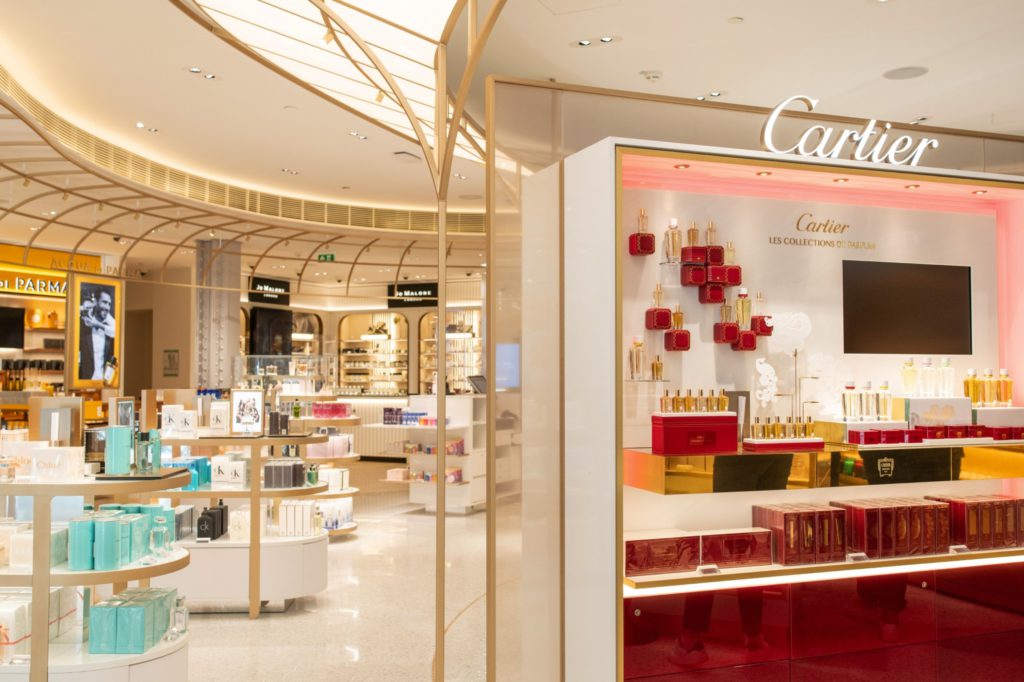(Bloomberg) — Cartier plans to raise prices in the next several weeks, making it the latest luxury brand to bet its customers are willing to spend more for their high-end watches, jewelry and accessories.
The “mild” price increase will partially offset the rise of the U.S. and Chinese currencies against the euro, according to Chief Executive Officer Cyrille Vigneron. It will also help to cover higher costs for key materials, such as the diamonds, platinum and gold used in the company’s jewelry, including $275,000 bracelets and $104,000 earrings.
“We’re in a long-term business, and we have to be careful not to adjust our pricing too quickly,” Vigneron said in an interview. He previously said any potential price increases by Cartier would likely be between 3% and 5%. Some other European luxury houses have been more active — Chanel, for instance, has raised the prices on some its handbags by more than 50%.
Like many businesses worldwide, high-end brands and luxury watchmakers are raising their prices to counter a bevy of rising expenses — from currency fluctuations to the cost of materials, shipping and labor. While there are signs that lower-income consumers are feeling the squeeze from the highest inflation in decades, rising prices across the economy have yet to deter wealthier shoppers.
LVMH Isn’t Feeling Pain of War, Inflation Yet: Andrea Felsted
That’s sparked optimism at Cartier and other luxury brands, despite a growing list of potential hurdles to growth. Shares in rival LVMH, which owns Tiffany & Co. and Bulgari, rose this week after reporting strong revenue growth in spite of inflation, Chinese lockdowns and the war in Ukraine. Cartier’s parent, Richemont, isn’t scheduled to release quarterly results until May.
In the long term, “we don’t see so many headwinds coming — hiccups for sure,” Vigneron said. “The overall growth of world wealth and the overall distribution is coming in favor of global luxury.”
So far this year, he said, Cartier has had robust sales in the U.S., Europe, Middle East, South Korea and Japan. Mercedes Abramo, Cartier’s North America CEO, said the region has showed “tremendous resilience.”
That will help to counter an expected temporary dip in Cartier’s Asia business amid China’s Covid-19 lockdowns, Vigneron said. He’s confident the country will bounce back and help maintain global demand for luxury goods. He said Asia’s market has “probably the highest potential for growth” in the next five to 10 years.
Russian Diamonds
For now, a potential increase in diamond prices could add to cost pressures, Vigneron said. Cartier and rivals including Tiffany have said they would stop purchasing stones mined in Russia following its invasion of Ukraine. The country is the world’s largest source of diamonds by volume. Other nations are likely to step up their production to fill the void, he said, meaning any price increases are likely to be short-lived.
Cartier continues to pay the salaries of its 250 employees in Russia, and Vigneron said the company has “enough cash in there to be able to hold on for quite some time.” He declined to provide more details.
In the U.S., Cartier is mulling more brick-and-mortar stores outside of major cities like New York, Miami and San Francisco. First, the company will test whether strong pandemic-era demand in states such as Texas and Florida persists, Abramo said. The company has opened a seasonal pop-up store in Palm Beach, for example, which it plans to keep open for another year.
Cartier’s toe-dip approach contrasts with some other luxury brands, which have already announced plans to open new stores across the U.S.
Online Sales
E-commerce also has an important role in the company’s planned growth. Online sales surged to 9% of Cartier’s global sales in 2021 — up from 1% in 2019. Vigneron said that percentage is even higher for the U.S., without giving the exact figure. The spike is part of a broader pandemic trend of consumers’ growing comfort with purchasing expensive items online.
Online purchases have slowed some as pandemic restrictions have lifted, but growth remains robust, Vigneron said. That’s helped Cartier reach younger customers — a demographic that Tiffany is also chasing.
Vigneron said that Cartier’s customer base is 65% millennials, or those born between 1981 and 1996. This means that, even though the company dates back to 1847, “we are a young brand,” he said.











